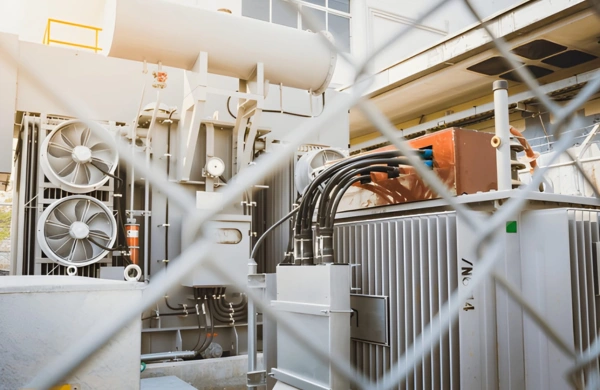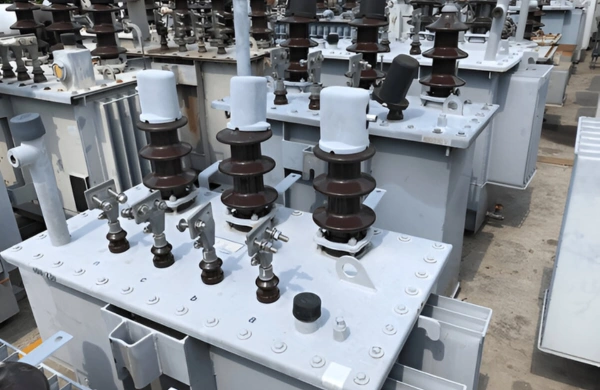Introduction
For industries that operate continuously under high electrical and thermal stress, oil cooled transformers remain the gold standard in power reliability. Designed to handle large voltage and current loads efficiently, these transformers use insulating oil as both a coolant and dielectric medium, ensuring stable operation under extreme industrial conditions.
From steel plants and mining operations to data centers and large substations, oil cooled transformers play a crucial role in maintaining uninterrupted power flow and operational safety. As global infrastructure, manufacturing, and renewable sectors expand, the demand for rugged, energy-efficient, and thermally reliable transformers continues to rise.
This article explores the engineering principles, performance benefits, and top oil cooled transformer manufacturers supporting heavy-duty industrial applications—featuring Zetwerk as a trusted manufacturing partner for globally compliant, precision-engineered transformer solutions.
Know About Oil Cooled Transformer Manufacturers for Heavy-Duty Needs
1. Understanding Oil Cooled Transformers
An oil cooled transformer is a power or distribution transformer that uses oil for both cooling and insulation. The oil absorbs heat generated by the windings and core and transfers it to the radiator surface or external cooling system, where it dissipates into the atmosphere.
Cooling Mechanisms:
- ONAN (Oil Natural Air Natural): Relies on natural circulation of oil and air.
- ONAF (Oil Natural Air Forced): Uses fans to increase airflow and cooling capacity.
- OFAF (Oil Forced Air Forced): Circulates oil through pumps and fans for large-capacity transformers.
- OFWF (Oil Forced Water Forced): Uses water-cooled heat exchangers for extra-heavy-duty continuous load applications.
These configurations make oil cooled transformers versatile across industrial, renewable, and utility-scale installations.
2. Construction and Design Features
a. Core and Windings
- Core: Made from Cold Rolled Grain Oriented (CRGO) or amorphous steel laminations to minimize core losses.
- Windings: Copper or aluminum conductors with high-grade insulation paper designed to withstand high dielectric and mechanical stress.
- Precision layering ensures low leakage reactance and high thermal conductivity.
b. Tank and Cooling Assembly
- Main Tank: Houses active components submerged in insulating oil.
- Radiators: Corrugated fins or detachable panels increase surface area for effective cooling.
- Cooling Accessories: Includes oil pumps, fans, and control thermostats in forced-cooling configurations.
c. Oil Type and Quality
- Mineral Oil: Traditional, cost-effective choice for most industrial uses.
- Natural Ester Oil: Biodegradable and fire-resistant for eco-sensitive or urban installations.
- Synthetic Ester Oil: Offers extended lifespan and excellent oxidation resistance.
d. Insulation and Sealing
- Hermetically sealed or conservator-type tanks maintain oil integrity and prevent moisture ingress.
- Pressure relief valves, magnetic oil gauges, and Buchholz relays ensure operational safety.
Zetwerk designs each transformer with advanced thermal-fluid modeling to optimize oil flow, ensure uniform temperature distribution, and prevent local hotspots.
3. Electrical and Thermal Performance Parameters
| Parameter | Typical Range / Specification | Purpose |
| Voltage Rating | Up to 765 kV | For high-voltage grid and industrial applications |
| Power Rating | 100 kVA – 500 MVA | Suitable for heavy-duty systems |
| Efficiency | 98.5% – 99.3% | Reduces operational energy losses |
| Cooling Type | ONAN / ONAF / OFAF / OFWF | Determines cooling performance |
| Temperature Rise | ≤60°C (oil), ≤65°C (winding) | Ensures thermal stability |
| Insulation Class | A / F / H | Defines thermal endurance |
| Oil Volume | 200 – 15,000 liters | Depends on rating and cooling design |
| Noise Level | <60 dB | Complies with industrial noise norms |
All Zetwerk-manufactured transformers undergo full-scale heat-run testing to validate cooling efficiency and thermal gradient control.
4. Advantages of Oil Cooled Transformers in Heavy-Duty Applications
a. High Overload Capacity
Oil’s superior heat dissipation allows transformers to handle load surges and prolonged operation without overheating.
b. Extended Service Life
Efficient cooling reduces insulation aging, extending operational life beyond 25 years with minimal maintenance.
c. Compact Power Density
Oil-cooled designs offer higher kVA ratings in smaller footprints compared to air-cooled equivalents.
d. Low Maintenance Requirements
Simple, passive cooling systems require less servicing and fewer moving parts.
e. Enhanced Dielectric Strength
Oil provides high electrical insulation, allowing compact winding arrangements and improved performance stability.
f. Cost Efficiency
Long service intervals and high efficiency result in lower total ownership cost.
Zetwerk’s designs integrate optimized tank geometry, oil circulation paths, and core materials to ensure high performance across demanding environments.
5. Industrial and Utility Applications
– Steel and Metal Processing Plants
Powering furnaces, rolling mills, and induction systems that require consistent high current.
– Oil & Gas and Petrochemical Plants
Provide safe, explosion-proof power in hazardous locations with flame-retardant oil systems.
– Data Centers and Infrastructure
Ensure uninterrupted power with low noise and stable voltage regulation.
– Renewable Energy Systems
Step-up transformers for solar and wind farms requiring high reliability and environmental safety.
– Power Utilities and EPC Projects
Support grid substations and transmission networks with high-voltage, heavy-duty transformers.
Zetwerk provides project-specific oil cooled transformers designed to meet sectoral requirements, from load profiles to environmental conditions.
6. Standards and Quality Testing
Applicable Standards:
- IEC 60076 Series: Power transformer design and testing standards.
- IEEE C57.12: Distribution and power transformer requirements.
- IS 1180 (Part 1): Indian standard for distribution transformers.
- DOE 2016 / NEMA TP-1: Energy efficiency compliance for U.S. markets.
Testing Procedures:
- Ratio, polarity, and winding resistance tests.
- No-load and load loss measurement.
- Temperature rise and heat-run tests.
- Oil dielectric strength (BDV) and moisture testing.
- Impulse and short-circuit withstand tests.
Zetwerk’s testing facilities feature fully automated load simulators and thermal chambers, ensuring compliance and repeatable results across all production units.
7. Leading Oil Cooled Transformer Manufacturers (2025)
1. Zetwerk Manufacturing
Zetwerk delivers high-performance oil cooled transformers for industrial, utility, and renewable applications. With end-to-end manufacturing—from core cutting to oil filling and testing—Zetwerk ensures quality, consistency, and on-time delivery for global projects.
2. ABB Power Grids (Hitachi Energy)
Produces oil-filled transformers up to 800 MVA with advanced digital diagnostics for grid and industrial use.
3. Siemens Energy India
Specializes in high-efficiency oil cooled transformers for transmission and heavy industrial sectors.
4. Kirloskar Electric Company
Offers durable and tested oil cooled transformers for power and industrial distribution.
5. Voltamp Transformers Ltd.
Manufactures medium and large oil cooled units for utility substations and EPC projects.
6. Bharat Heavy Electricals Limited (BHEL)
Supplies high-capacity oil cooled transformers for power generation and transmission projects.
7. CG Power and Industrial Solutions
Known for its range of oil filled transformers serving global export markets.
8. Technological Advancements and Trends (2025)
- Ester Fluid Technology: Non-toxic, fire-safe oils replacing conventional mineral oil.
- Amorphous Core Materials: Cutting core losses by 60–70%.
- Smart Transformer Monitoring: IoT-based sensors for real-time temperature and oil diagnostics.
- Hybrid Cooling Designs: Combining forced-air and forced-oil for dynamic load environments.
- Eco-Design Optimization: Focus on recyclable materials and reduced oil volume.
Zetwerk integrates these advancements in its manufacturing process, offering energy-efficient and environmentally responsible transformers for industrial and utility-scale operations.
Conclusion
Oil cooled transformers continue to be the preferred choice for heavy-duty industries and large-scale power networks due to their superior heat management, dielectric strength, and long operational life. As global infrastructure and energy demands expand, the focus has shifted to efficient, digitally monitored, and eco-friendly designs.
Zetwerk stands as a leading oil cooled transformer manufacturer, delivering custom-engineered, UL/IEC-certified solutions built for performance, longevity, and reliability. From design to final testing, Zetwerk ensures every transformer meets the rigorous demands of industrial and utility operations worldwide.




FAQs
a. It’s a power transformer that uses insulating oil for both cooling and electrical insulation.
a. They offer superior cooling efficiency, higher power density, and longer service life compared to dry types.
a. ONAN uses natural air circulation, while ONAF adds fans for forced-air cooling and increased capacity.
a. Yes, they’re widely used in solar, wind, and hydro plants for step-up voltage applications.
a. Through advanced thermal modeling, precision manufacturing, and complete routine and type testing.








